(204029 products available)








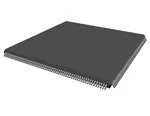













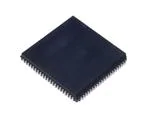





























































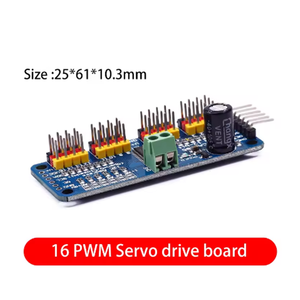
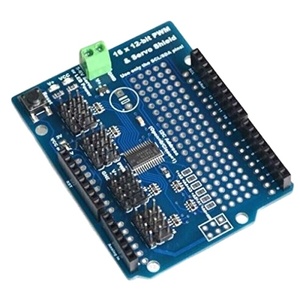















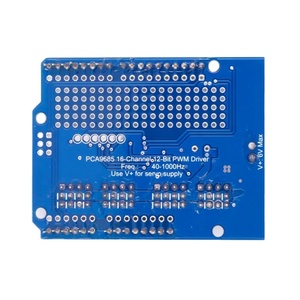















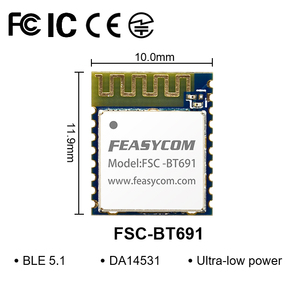











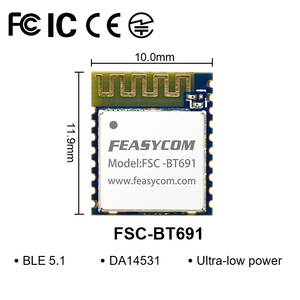


































Multiple Channel I2C PWM ICs
These integrated circuits allow the simultaneous control of several DC motor channels or components. Such a feature is particularly beneficial in intricate devices requiring diversified power management, e.g., robots or adjustable cooling systems. The electronic speed control of every motor or fan can be individualized through multiple output channels, hence optimizing performance.
High Precision I2C PWM ICs
High Precision Integrated Circuit (IC) is applicable where PWM signal accuracy is crucial, e.g., in LED dimming and voltage regulation. These I2C PWM chipsets produce PWM signals with minimal duty cycle fluctuations and periods. They effectively enhance system performance in applications necessitating reliable output, more so in tasks where slight power variations may cause malfunctions.
Dual-Channel I2C PWM ICs
These chips support the independent control of two outputs. Dual-channel control is suitable for moderate applications requiring variable control over diverse devices. Such an architecture is mainly used in simple robotic systems where two motors or two independently adjustable elements need to be managed from a single controller.
High-Frequency I2C PWM ICs
I2C PWM controllers with a higher frequency of operation are fit for applications requiring rapid PWM signal modulation. Examples include DC-DC converters or high-frequency motor drives. The IC's capacity to modulate at high frequencies aids mainly in fine control of power delivery and minimizes energy dissipation. Their Frequency output makes these ICs suitable for both industrial and consumer applications.
Speed Control for Motors
I2C PWM ICs are greatly useful in regulating motor speeds in various engineering applications. In industrial automation, these chips offer accurate motor speed adjustments for conveyers, pumps, and fans. Easy to communicate through an I2C interface, these PWM controllers can adjust motor speeds by sending a digital signal that varies the duty cycle of the PWM. This provides smooth motor operations and improves system efficiency without using mechanical components.
LED Lighting Control
I2C PWM ICs are widely deployed in controlling LED lighting systems. They control brightness levels, color mixing in LED displays, and energy levels efficaciously. In architectural or entertainment lighting, these controllers adjust the PWM output to create dynamic lighting effects, enhancing visual displays. This not only improves aesthetics but also saves energy by preventing maximum output lighting where not required.
Heating and Cooling Systems
The main function of I2C PWM ICs in temperature control systems is to regulate heating and cooling components. For instance, in HVAC systems, these chips control compressor speed and dampers. Such a control service allows for fine temperature adjustments in buildings or vehicles, thereby improving energy efficiency and maintaining desired temperature levels. This application is particularly advantageous in automotive and aerospace industries, where weight and energy consumption are critical factors.
Battery Management Systems
I2C PWM ICs play an important part in battery management systems(BMS) by controlling charging and discharging processes. In electric vehicles or portable electronic devices, these integrated circuits regulate power allocation to motors, fans, or other components, preserving battery life. By adjusting the PWM duty cycle, BMS ICs ensure that batteries are charged safely and efficiently and that power usage is optimally balanced to prolong battery longevity.
Channel Output
I2C PWM ICs with various output channels can control multiple devices simultaneously. This feature is particularly valuable in complex applications where several actuators or components require independent control from a single microcontroller.
Adjustable Duty Cycle
Duty cycle plays a vital part in this integrated circuit. It grants users the flexibility to adjust output voltage levels according to requirements. This is particularly useful in motor speed control, where varying the duty cycle adjusts the motor's power levels and thus its speed.
Low Power Operation
PWM controllers systemically manage devices with less power. This is especially crucial in battery-powered or energy-sensitive environments, such as portable gadgets or electric cars, where power conservation is key.
High-Resolution Output
The high-resolution I2C PWM integrated circuits are capable of generating smooth and accurate PWM signals. This feature proves important when performing power regulation and fine control in LED dimming or voltage conversion applications.
Microcontrollers and computers operating the I2C protocol can install these integrated circuits. The procedure follows these steps:
Regular Software Updates
Regular updates and maintenance of the software should occur when needed so that performance is optimized and bugs fixed. This includes updating the libraries or drivers used to control these I2C motors. Essentially, updates of the software with new functions or optimizations will help in maintaining the I2C PWM IC hardware working properly.
Watch for Overheating
Habitual checking of the operating temperature will reduce the chances of an increase in temperature affecting the performance of the IC. This is common with applications that require intensive work, like controlling motors of huge power. The introduction of adequate cooling or reduction in workload will help prevent the ICs from overheating.
Check I2C Communication Stability
This includes regular inspection of the I2C bus for communication errors. One has to ensure the call is properly terminated, with pull-up resistors properly connected. Bus errors or conflicts cause unpredictable behavior in applications. In doing routine checks, one can detect these errors and address them accordingly.
Monitor Power Levels
It is vital to monitor the power supplied to the I2C PWM IC to avoid damaging or under-powering the devices. Fluctuations in voltage levels cause instability in performance. This is done by using a voltage monitor circuit to ensure even and stable voltage levels are supplied.
Hardware Inspection
Frequent external inspections of the IC and its surrounding components should be done to check for physical damage. Check for solder joints that are poor and for debris that has accumulated on the hardware. Hardware checks reduce failures and increase I2C PWM performance.
Flexible Control
The beauty of the I2C PWM controller is the flexibility in control. This is because different devices such as motors and LEDs can be controlled from a microcontroller using the same bus line. This line is very useful in applications that require simultaneous control of different components. The demand for space-saving solutions increases due to the small size of I2C hardware.
Efficiency and Precision
It fully utilizes I2C PWM as it gives high efficiency and precision with low energy consumption. Variable duty cycles support smooth motor operations and fine brightness adjustments for energy-sensitive systems. This makes it suitable for both industrial applications and consumer electronics.
Scalability
The architecture of the I2C PWM IC is highly scalable, allowing further devices or channels to add easily without major system overhauls. This is particularly useful in applications that grow or evolve with time, like robotics or automation systems.
Real-time Control
An abundance of applications requiring real-time control benefits from I2C PWM IC, e.g., servo positioning in UAVs. In such cases, low-latency communication directly impacts performance. Any delay for I2C bus is negligible hence making it ideal because it was for time-sensitive operations.
As abstracted above, an I2C PWM IC is an integrated circuit that operates under the Inter-Integrated Circuit (I2C) communication protocol. It generates Pulse Width Modulation (PWM) signals. These signals control various devices in great demand, e.g., motors, LEDs, and heaters.
The microcontroller sends commands to the I2C PWM IC over the I2C bus to adjust the PWM signals. The PWM IC then generates the signals with the desired duty cycles and frequencies. These signals are then sent to the connected devices to control power levels, speed, brightness, temperature, etc.
The following are some of the advantages of I2C PWM ICs: great flexibility during system design due to digital control of analog devices; efficient power management in battery-based systems; simple wiring due to single I2C bus line control of multiple devices; and real-time adjustments for active feedback systems.
As integrated circuits, I2C PWM ICs are not directly suitable for high-power applications. However, they can control power devices such as transistors and MOSFETs to handle higher loads. This way, the ICs manage the signal, while the power devices carry the load.
I2C PWM ICs are continually monitored for communication stability, power supply levels, operating temperatures, and hardware inspections. Other factors include frequent software updates to fix bugs and improve performance.